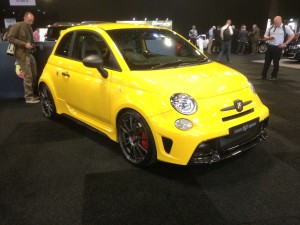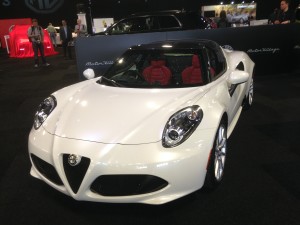 When I got to the London Motor Show, I started rummaging around in my pockets. No, I couldn’t afford the £600,000 for the Speedback GT by David Brown or the £250,000 for the Noble supercar. I realised that I would have to go back home in exactly the same way as I’d arrived: by public transport.
When I got to the London Motor Show, I started rummaging around in my pockets. No, I couldn’t afford the £600,000 for the Speedback GT by David Brown or the £250,000 for the Noble supercar. I realised that I would have to go back home in exactly the same way as I’d arrived: by public transport.
The London Motor Show is a great opportunity to see some wonderful cars. It’s a relatively small event – not like the major shows at Geneva and Frankfurt where the display halls are filled with hundreds upon hundreds of cars and where all the major manufacturers are out in force.
 The London show probably has only 150 cars, but it’s cheap to visit (£10) and it has some exciting new offerings and plenty of people desperate to talk to motoring aficionados (or petrol-heads as they’re often known) and discuss specifications, engine sizes and prices. If you like cars, it’s a good place to be.
The London show probably has only 150 cars, but it’s cheap to visit (£10) and it has some exciting new offerings and plenty of people desperate to talk to motoring aficionados (or petrol-heads as they’re often known) and discuss specifications, engine sizes and prices. If you like cars, it’s a good place to be.
There were relatively few small family cars – the show seems to be more about recreational driving and the luxury end of the market. However there were some nice offerings. Ford was unveiling its new luxury 4 wheel drive car – The Edge (top left). And MG, -now making cars in Shanghai, unveiled the new GS – another luxury 4 wheel drive. Both of these – aimed unashamedly at the luxury urban driver – attracted a lot of attention. Ford and MG have yet to set a price for these cars.
 A couple of attractive smaller cars, were turning heads at the event. The Alfa Romeo Spyder (above) is a light sports car that in its various incarnations has been in production for around 50 years. The new Spyder C4 has a carbon fibre body and a top speed of 160mph. The top of the range model has a price tag of almost £70,000. It’s ideal for people who’ve just been through a messy divorce, sold the family house and want to recapture their youth.
A couple of attractive smaller cars, were turning heads at the event. The Alfa Romeo Spyder (above) is a light sports car that in its various incarnations has been in production for around 50 years. The new Spyder C4 has a carbon fibre body and a top speed of 160mph. The top of the range model has a price tag of almost £70,000. It’s ideal for people who’ve just been through a messy divorce, sold the family house and want to recapture their youth.
Rather more interesting is the Fiat Abarth 695 (above right), which looks like an ordinary Fiat 500, except that its souped-up engine can go at 143mph and it has a price tag of £33,000. It’s a stylish piece of engineering.
The show has very little by way of catering facilities: you can’t get much more than a coffee. But it is in Battersea Park, which is very beautiful, has a great view of the river and is just a short walk from the Kings Road in Chelsea, which has no shortage of great places to eat. When I visited, the organisers believed that the show would be completely sold out, so do check before you go.

